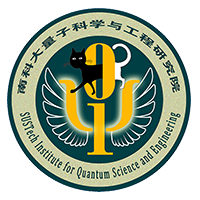《拓扑序简介》系列讲座(第十二讲)
https://www.koushare.com/video/videodetail/5179
报告人简介:顾教授是在拓扑物质相这个领域获得国际公认的领先专家。近年来,他及其合 作者基于长程纠缠的观念建立了研究拓扑物质的全新架构。他们进一步将这一 观念用于强关联电子体系中的拓扑序分类,并且发展了全新的数学框架,例如 超张量范畴理论和群超上同调理论。特别是他和合作者提出了一类全新的拓扑 序 – 所谓的对称性保护拓扑序。这一观念对于2016年诺贝尔物理学奖做出了重 大贡献。 2016年诺贝尔奖高阶咨询也特别强调顾和文的工作揭示了Haldane相的 物理本质。 顾教授和他的合作者进一步提出用长程纠缠来刻画拓扑序,并且指出长程纠缠 可以用一类特殊的波函数进行局部编码,即张量网络状态。张量网络态最早是 由F. Verstraete和I. Cirac从量子信息的角度提出来的,然而计算张量网络态的计 算却是一个指数难的问题。因此,顾教授和合作者进一步发展了一种精确和高 效的方法 – 纠缠过滤重整化来计算张量网络态的物理量。这一算法有潜力解决 一大类强关联系统中的难题。此外,顾教授甚至指出,拓扑马约拉纳模式这样 的分数化激发可能存在于三维的链接闭弦中,甚至可以作为统一夸克和轻子的 基本模块。顾教授在研究相互作用系统的拓扑现象这个方向发表了50多篇文章 (Google学者引用数超过7000),过去十年被邀请在国际会议上进行了30多场 演讲。 Prof. Gu is an internationally recognized leading expert on topological phases of quantum matter. In recent years, he and his collaborator had established a new paradigm for topological matter based on the concept of long-range entanglement. They further used this concept to classify topological phases of quantum matter in strongly correlated electron systems and developed new mathematical framework such as super tensor category theory and group super-cohomology theory. In particular, he and his collaborator proposed a new class of topological phases protected by global symmetry – the so-called symmetry protected topological phase(SPT), which made significant contribution to 2016 physical Nobel Prize. The Advanced Information of 2016 Nobel Prize highlights the work by Gu and Wen for the physical nature of Haldane phase. Prof. Gu and his collaborators further pointed that long-rang entanglement is the essential data to characterize topological phases and they can be locally encoded in a special class of wavefunctions, the tensor network states (TNS). They also developed an accurate and efficient way -- the Entanglement Filtering Renormalization Group (EFRG) to calculate physical quantities of TNS. This method has the potential to resolve a large class of long standing hardcore problems. In addition, Prof. Gu even pointed out that topological Majorana mode -- a point like defect can exist on linked loops in 3D and it can even sever as a fundamental block to unify quarks and leptons. Prof. Gu more than 50 publications (with more than 7300 citations from google scholar) in the research of topological phenomena in interacting systems and have more than 30 invited talks in international conferences.




